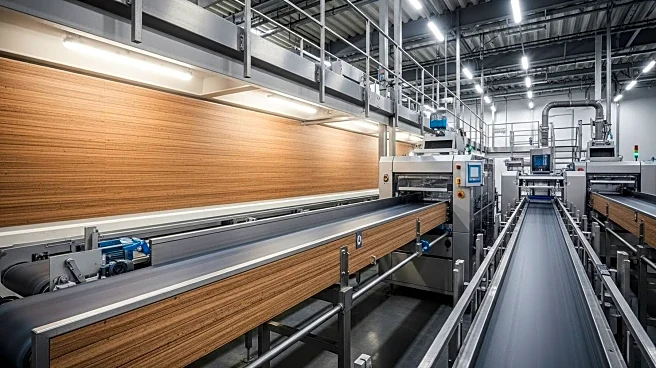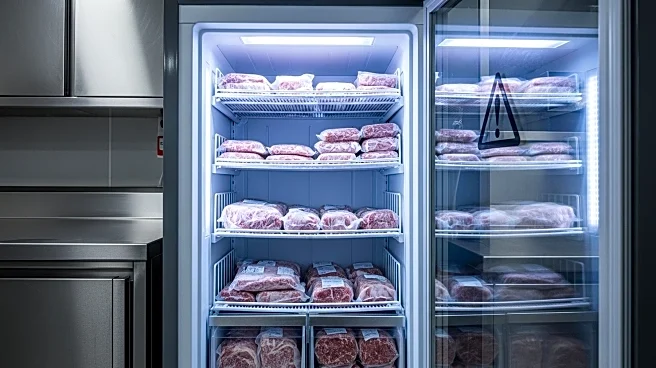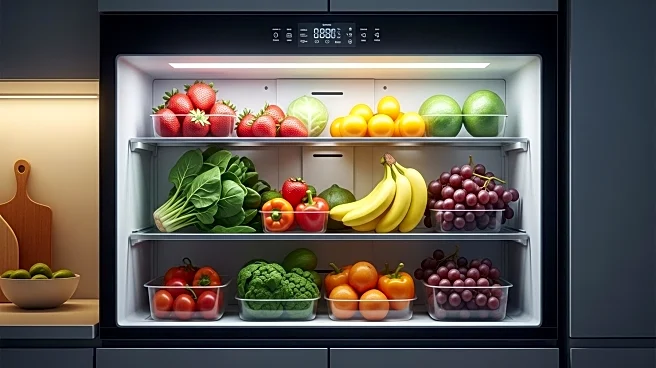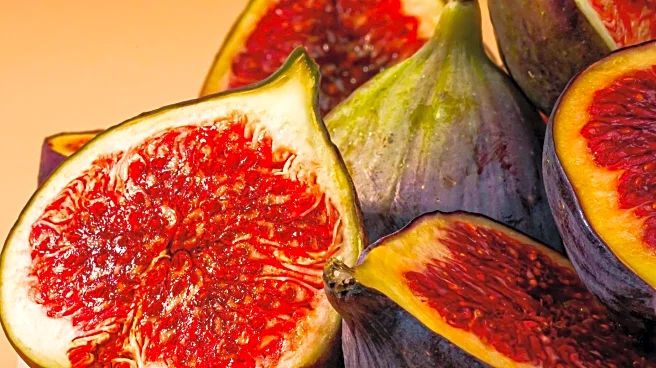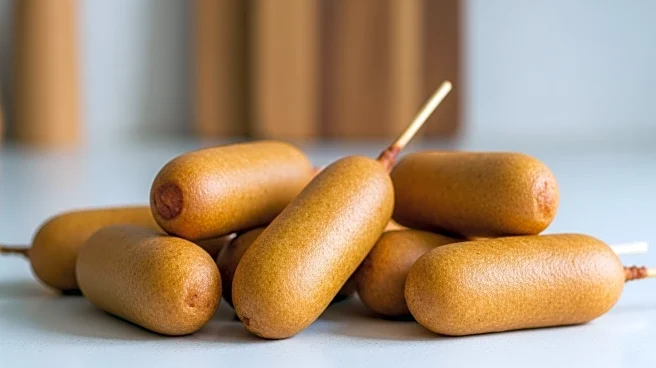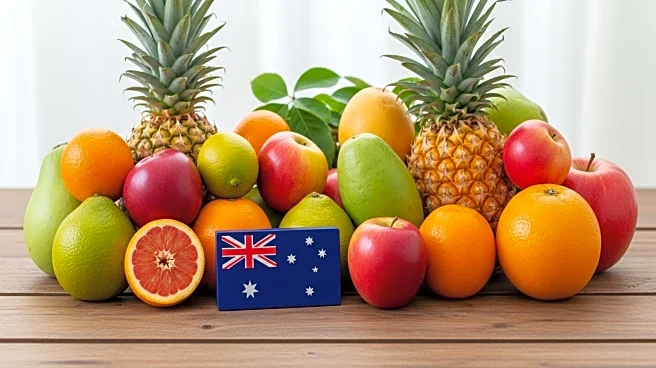What's Happening?
A team of researchers has developed a novel biodegradable food packaging film that doubles as a sensor to detect spoilage and contamination in real time. The film is made from onion waste-based quantum dots, specifically sulfur and nitrogen-doped carbon quantum dots (S, N-CQDs), synthesized from red onion peel waste. This innovative solution aims to improve food safety through intelligent packaging by visually indicating the presence of spoilage microorganisms and chemical contaminants like hexavalent chromium (Cr(VI)). The sensor addresses global food safety issues by offering real-time insights into food quality, a significant improvement over current detection methods that rely on slow, lab-based analysis. The film combines amylopectin, a natural biopolymer, with the quantum dots, allowing it to respond to chemical and biological changes with observable color or fluorescence shifts.
Why It's Important?
The development of this biodegradable film is significant as it offers a sustainable and cost-effective solution to enhance food safety. By providing real-time detection of spoilage and contamination, the film could revolutionize the food packaging industry, reducing food waste and improving consumer safety. The use of onion waste as a starting material aligns with broader sustainability goals, promoting the use of environmentally friendly resources. Additionally, the film's ability to detect both microbial and chemical spoilage makes it a versatile tool for various food products, potentially benefiting manufacturers, retailers, and consumers by ensuring better quality control and reducing health risks associated with spoiled food.
What's Next?
Future research will focus on improving the film's flexibility, as its current xerogel form is slightly brittle, which may limit its practical application in real-world packaging scenarios. Enhancing the film's durability without compromising its sensitivity is crucial for its widespread adoption. Researchers will also explore additional applications and modifications to the film to expand its use across different types of food products and packaging environments. The continued development of smart packaging solutions like this film could lead to significant advancements in food safety technology, with potential implications for regulatory standards and industry practices.
Beyond the Headlines
The biodegradable film represents a step forward in the integration of sustainability and technology in food packaging. Its development highlights the potential for using waste materials to create innovative solutions that address environmental and safety concerns. The film's ability to provide visual cues for spoilage detection also raises questions about consumer education and the potential for new labeling standards that could enhance transparency and trust in food products. As smart packaging technologies evolve, ethical considerations regarding data privacy and the impact on traditional food safety practices may also emerge.

